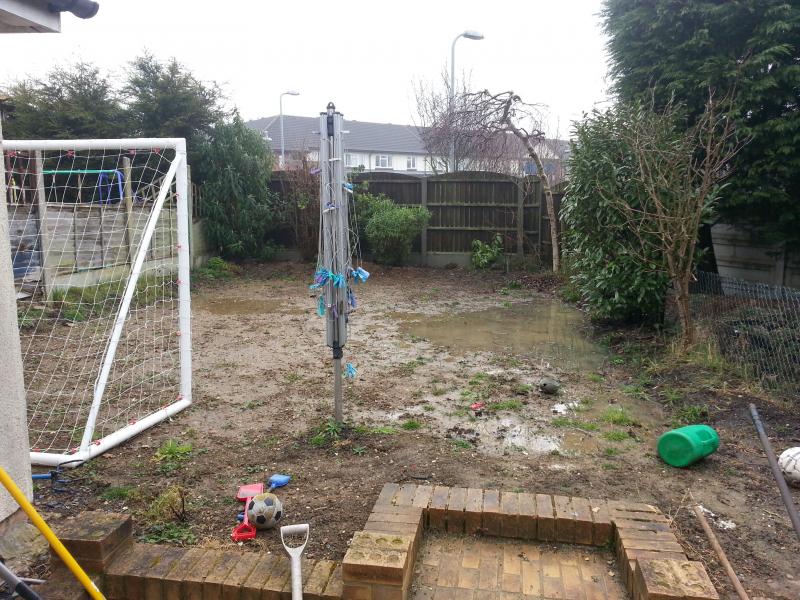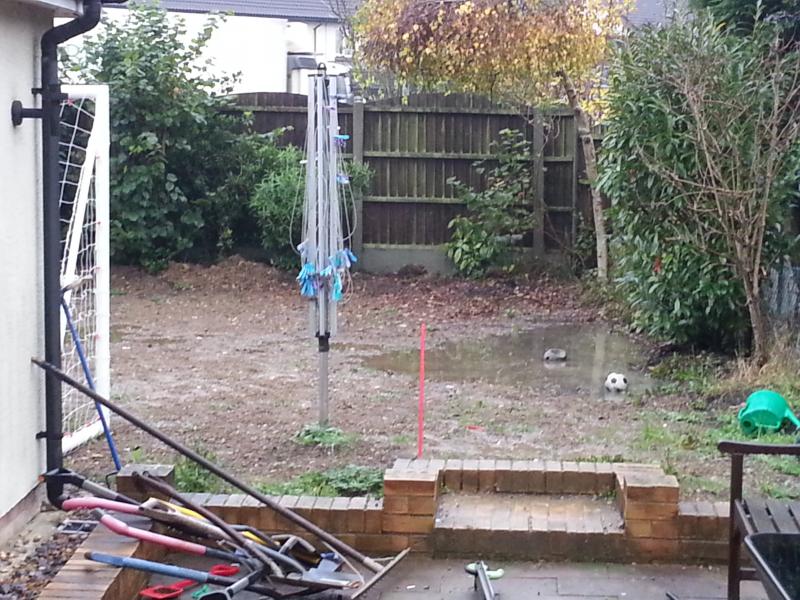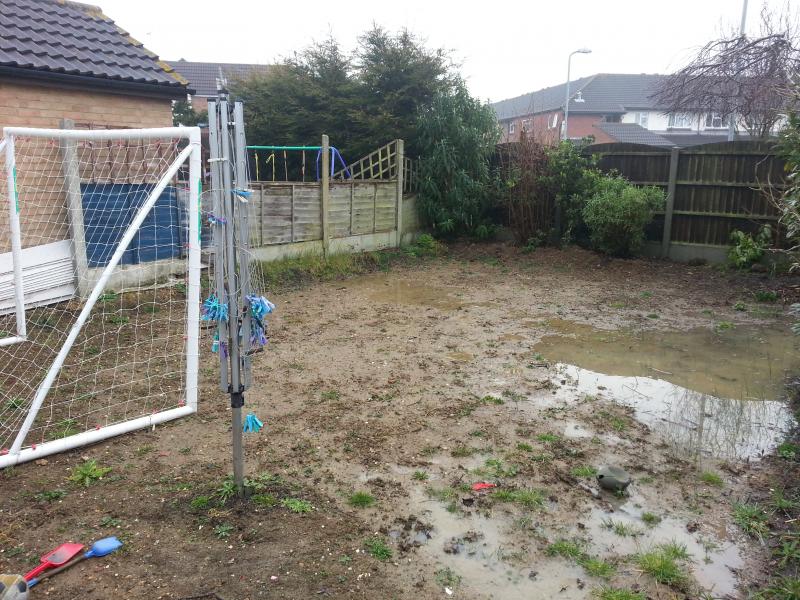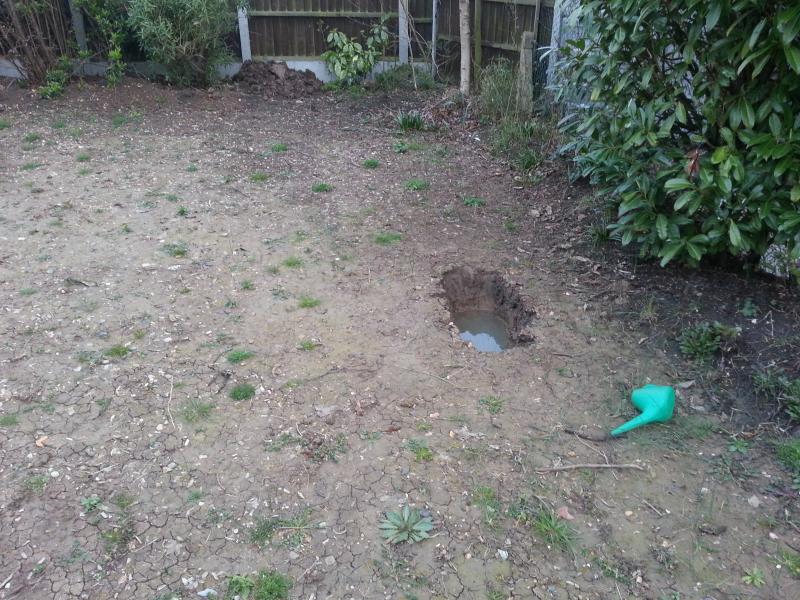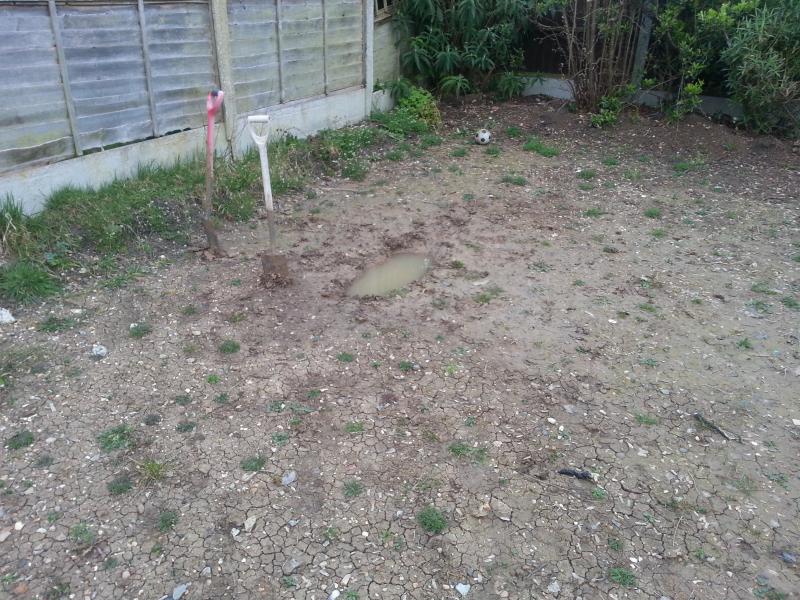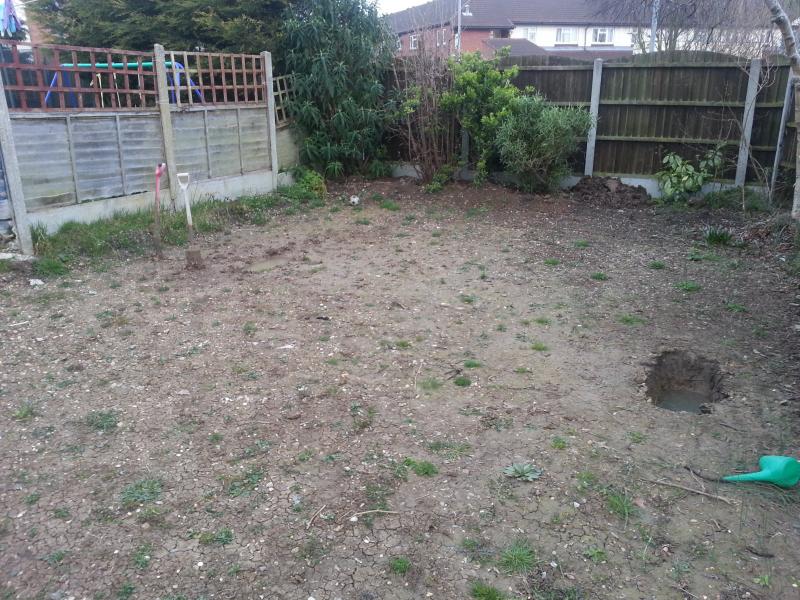My garden is very clay like.
in the summer we had gapping cracks and in the winter/ after heavy rain it stays wet and boggy for a long time.
it was uneven and had a slight mount in the middle.
so to even it out in the summer/ autumn I removed the grass, top soil and about 2inches of subsoil (22 tonnes in total). I then rotovated it.
I was planning on putting 22tonnes of topsoil back and grassing it nice and level, so me and me boy can have a kick of football with out him getting his ankle caught in the gaps. Needless to say I ran out of time to get some topsoil delivered before winter.
this is what the garden looks like now, would topsoil and grass prevent the flooding?
My neighbours garden to the left is about 3inches higher and my neightbour to the right about 3inches lower. There is no run off for the lawn.
advice please for this summer project
in the summer we had gapping cracks and in the winter/ after heavy rain it stays wet and boggy for a long time.
it was uneven and had a slight mount in the middle.
so to even it out in the summer/ autumn I removed the grass, top soil and about 2inches of subsoil (22 tonnes in total). I then rotovated it.
I was planning on putting 22tonnes of topsoil back and grassing it nice and level, so me and me boy can have a kick of football with out him getting his ankle caught in the gaps. Needless to say I ran out of time to get some topsoil delivered before winter.
this is what the garden looks like now, would topsoil and grass prevent the flooding?
My neighbours garden to the left is about 3inches higher and my neightbour to the right about 3inches lower. There is no run off for the lawn.
advice please for this summer project


